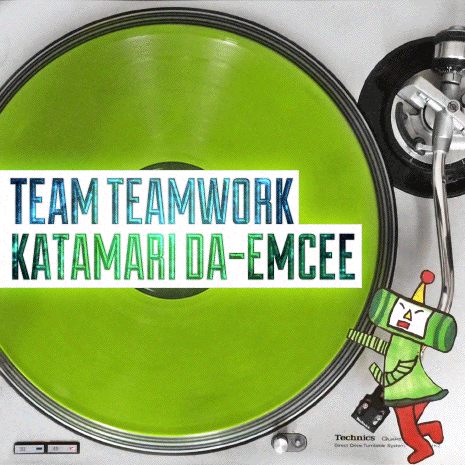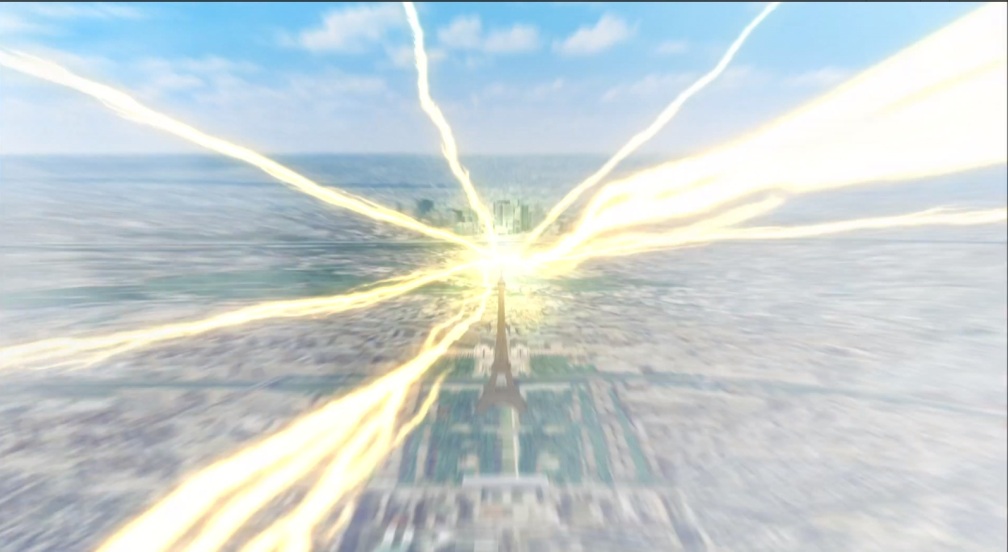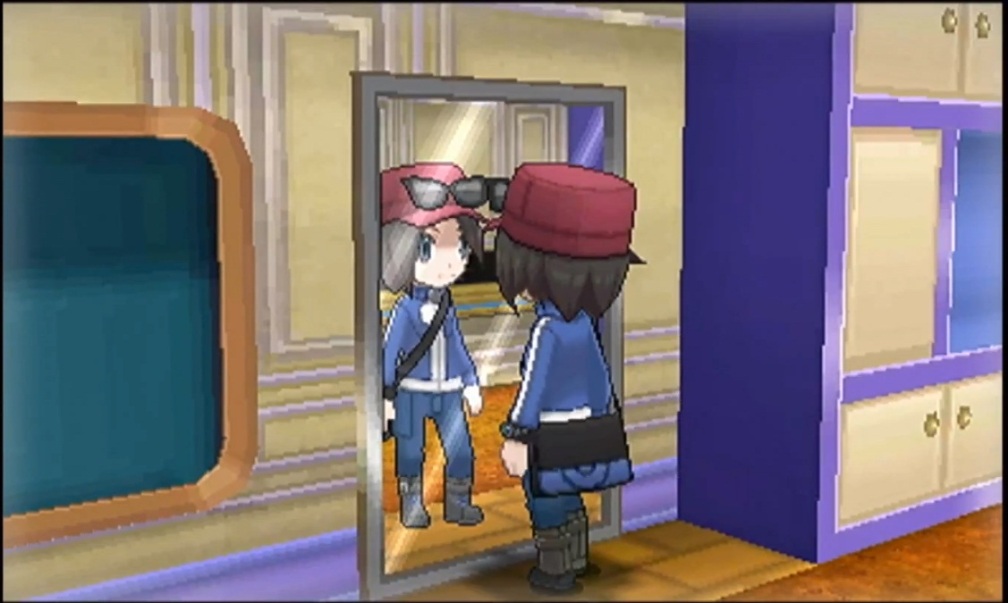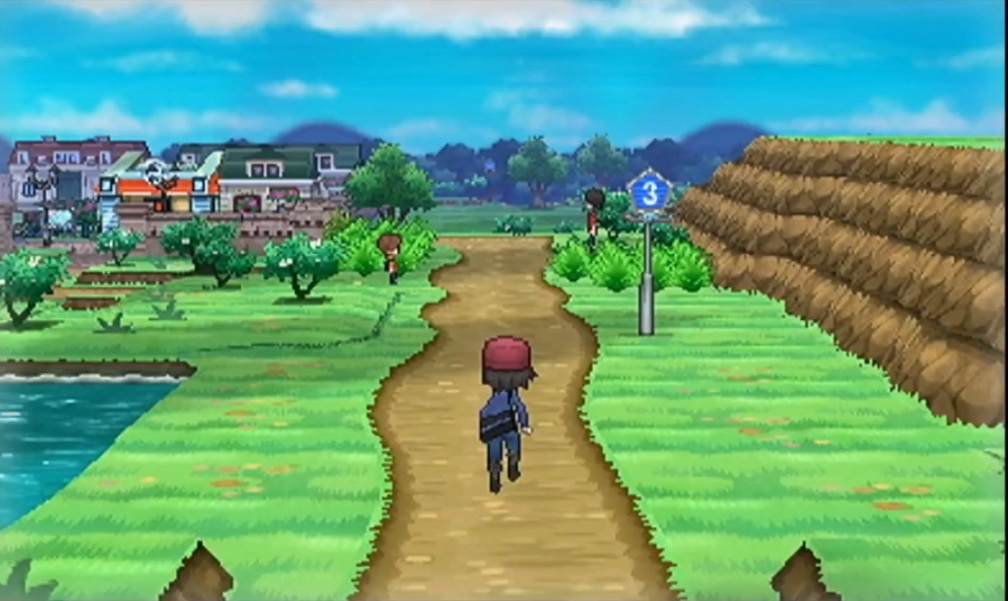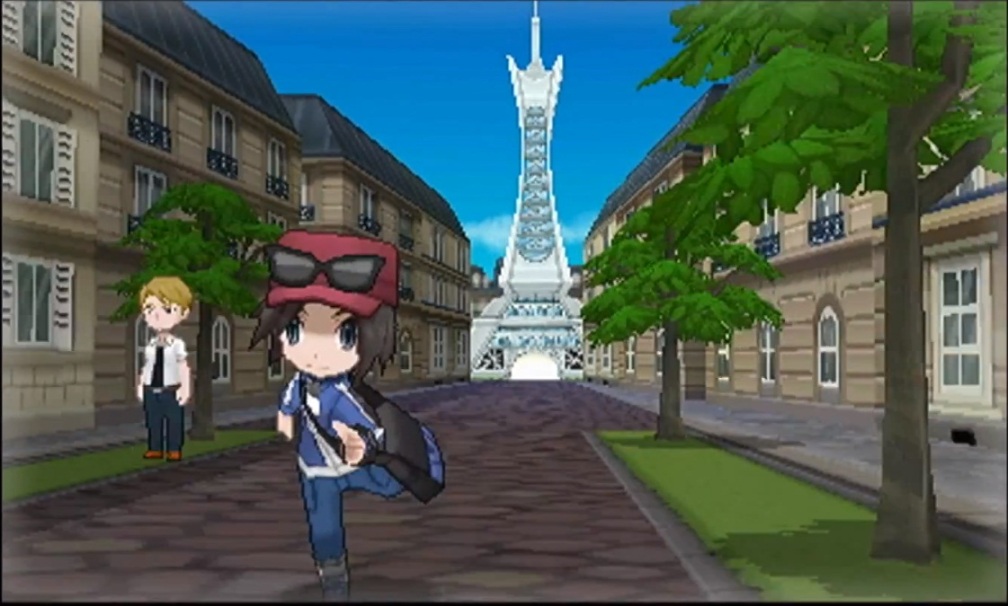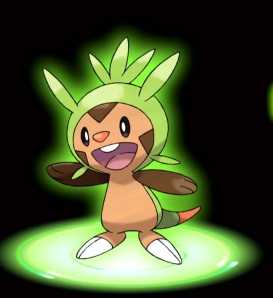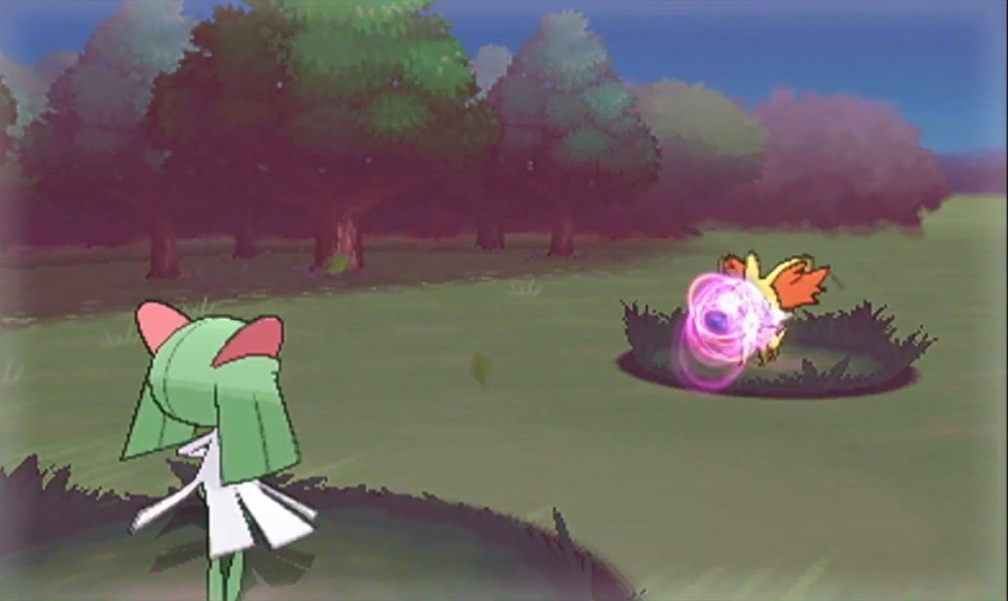Tag Archives: Video game
EightBitSiblings Play – Chrono Trigger – Part 3 –
EightBitSiblings Play – Chrono Trigger – Part 2 –
It wouldn’t be an RPG with a starting forest!
Katamari Da-Emcee – HipHop Lyrics Infused With Videogame Beats
I’mma say it right off the bat: I love Team Teamwork. Before you even read this, required listening: Vinyl Fantasy 7, Ocarina of Rhyme, and Super Nintendo Sega Genesis.
Go ahead.
I’ll wait.
All done? Sweet.
Katamari Da-Emcee is Team Teamwork’s latest offering, and expertly blends videogame beats with hip-hop lyrics. I mean, listen to this shit.
What I love about Team Teamwork is that as an artist, he has a passion for videogames and hip-hop. You can hear it in every bit of the production. I’ve never been a fan of acoustic covers of hip-hop songs. They come across as being strained and a forced quirkiness, as well as a sort of “safe” way to listen to hip-hop, without having to immerse oneself in the culture and music. Like…this…
Nooooo-
So anyways, yeah, Team Teamwork’s choices with every song are pretty well chosen, and he’s hit it out of the park with this album too. Give it a listen/download!
Aspiring To Be Like My Avatar
I’ve always wanted to get into the Persona series, so I decided to give Persona 3 a try while on vacation. I quickly found myself hooked, and am near completing the game.
There are a few attributes of Persona 3 that caused me to be so enthralled in its story, and those attributes have given me some insight about how I operate as a person.
Persona’s learning curve is quite steep, but its basic setup makes sense. It’s a dungeon crawler wrapped in the sugar-coating of a dating-sim/life-simulator. In the day, your character goes to classes and builds relationships with others, and at night, you team up with your classmates to battle deadly shadows using “personas”, physical manifestations of your psyche. The better your relationships with other people, the more powerful your persona can become.
Having recently finished high school, it was interesting drawing parallels to the kind of student I was at the time in comparison to my character, and his habits. In real-life I was definitely a slacker in high school. But virtual me studies before bed every night. In Persona, that results in instant feedback, a fun sound-effect, a light appearing above your character’s head, and a notification that reads “your intelligence has increased!” I’d love to know exactly when I’ve gotten smarter the instant it happens because of the work I’ve done. But that isn’t the case how it works in real life.
Then there’s the fact that building relationships in Persona is so damn easy. You have a few choices to converse with a character when you hang out with them, and the right one will increase your “S.Link”, a visual representation of how well you get along with them. I would kill to have a system like that in real life. As a socially anxious, introverted person, it’d be a Godsend, taking out all the messiness that comes with interacting with other people. You have a general idea of what you can and should say before you have to say it, and there’s no time-limit to respond to a character that’s talking to you. Sometimes, if I wasn’t sure what to say of the choices given to me, I could just look up the correct response online. You don’t get that sort of safety in real life, an aspect that made Persona very comfortable for me to immerse myself in.
What struck me as most revealing, however, is how my Avatar was so willing to jump at any opportunity presented to him. Culture club? Sure! Kendo? Why the hell not? Wanna hang out? I’m free Sunday, let’s go. This is in stark contrast to the Eight-Bit you all know me as – withdrawn, playing it safe, making up his mind about how things will turn out, before they can even happen. Sure, the end goal in Persona was to power up those S.Links and increase my personas’ power. But Persona 3’s excellent writing caused me to get attached to the characters as well.
I love videogames. It’s the reason this blog exists. Even when I’m burnt out on playing them, I still follow the news, think about the theory. They helped me learn how to read, make decisions, all that great stuff. But playing Persona 3 was the first time I could say that a game taught me something substantial about myself. Controlling my Avatar became a mirror to examine myself, my strengths and my flaws. I’ve created characters in other games, but in them I was decorating houses and slaying goblins, which are far from the realm of reality, unlike going to a virtual school.
Now, nearing the end of Persona 3, I’ve decided to aspire to become more like my Avatar – to jump headfirst into things, even when I’m not sure how they’ll turn out. Though the risks are a little higher in the real world, at least I don’t have to fight any demons.
I’m back!
Hello, world! I’ve been away from this blog for too long! But I figured it was time to get back into it! Allow me to give you all an update:
- My original reason for letting this blog die was due to me joining Pixels or Death! (Check us out, we’re awesome) Joining that place made me feel like I didn’t need to write here anymore. But I realize now that there is a dramatic difference between writing for a formal news-site, and just getting my thoughts down on a particular subject that I’m interested in in an informal manner. So look for more posts like that here!
- School. Damn school, amirite. It kept me busy and I pretty much forgot this blog in an attempt to stay focused. I put an emphasis on attempt because I have the attention span of someone who maybe needs to be medicated, hehe.
- I’ve been traveling! It’s been fun, and I’ve had a lot of personal growth as I’ve done it.
- All that said, look for a post on Earthbound sometime soon. I’ve been playing a lot of that as of late.
Now I’m ready to get back in the game and rumble. I’ve had so many thoughts churning in my head, ready to spill on out. So, get ready, and thanks if you’ve stuck around this long! Check for an Earthbound article soon!
The Master Sword
You stumble about in the forest, lost and confused. Your goal is somewhere in this forest, but where, you have no idea. There are numerous decoys in your path: A deterrence to those before you, who have wanted the sword and failed. But you are persistent. You need the sword if you have any hope of defeating the Evil that has taken over Hyrule.
Then, just as you begin to lose hope, you find yourself in a grove. In that grove, there is a pedestal. And in that pedestal, you catch your first glimpse of the Master Sword.
If you were anything like me, the moment you pulled the Master Sword out of its pedestal in A Link to the Past, you had only one thought: Hell. Yes. How could you not be excited to see it? Though it takes many forms, the Master Sword always looks amazing: A double-bladed longsword, with a blue hilt, and Triforce engraved into the blade. Link simply looks cool when he finally obtains it in whatever game he’s in.
It is a weapon that is as legendary and iconic as the series it comes from. It is a sword that has been apart of Zelda lore for twenty years now. You can’t think about the Legend of Zelda without having the Master Sword come to mind.
If you’re big on Arthurian literature, you can probably draw some parallels between the Master Sword and Excalibur. Both the Master Sword and Excalibur are swords that are placed in stone pedestals. Both are also waiting to be drawn by the right hero, who can use it to its fullest potential. There’s something about this particular fact, that only you can wield the Master Sword, that allows you as a player to connect with it. It exemplifies something that only videogames can do. In movies and books, you are a passive viewer. But in videogames, you are the defining factor, able to influence the events of the world around you. Being the only one who can own the Master Sword cements that metaphorical and physical power.
The Master Sword’s first appearance is in A Link to the Past. But historically, its origins are explained in Skyward Sword. It is created by Hylia, originally as the Goddess Sword. From there, it goes through a cycle, being handed down from Hero to Hero, passing through Zelda game to Zelda game.
It is this recurrence throughout the Zelda Series’ history that makes the Master Sword such a memorable weapon. From A Link to the Past onward, the Master Sword has appeared in some form in every core Zelda game. No matter the Zelda game you play, you are more than likely to go through a series of trials to get the sword. In Ocarina of Time, you must go through three trials to unlock the Master Sword’s resting place, within the Temple of Time. In Windwaker, you must complete those same trials once more, to prove that you have the “Spirit of the Hero.” And in Skyward Sword, you forge the sword yourself, using the Sacred Flames in order to temper the blade, all the while strengthening your personal bond with the sword. From game to game, the Master Sword has a permanence in the Zelda series: Always waiting, like a silent guardian of the realm of Hyrule. It waits for its master, a worthy enough hero to wield it against evil.
That hero-you, the player-is always waiting to get the Master Sword as well. The Master Sword, from a gameplay standpoint, is a milestone; a great accomplishment for reaching a certain point in a Zelda game. It is a vivid indicator of progressing through the plot, and a reward for surpassing the challenges you have had to face thus far. Whatever sword you have, the Master Sword is able to take its strength and double it (Biggoron Sword notwithstanding). In Ocarina of Time you can bounce back and forth between time periods using the sword, and in Twilight Princess, the Master Sword can be upgraded to instantly kill Twili. This is what makes the Master Sword such an amazing weapon. When you get it, monsters that you had trouble killing before can be easily dispatched once the sword has been obtained. With the Master Sword in your hands, obstacles that you couldn’t get past as Kid Link are trivial matters as Adult Link.You feel stronger when you get it.
The Master Sword also represents something else. When you’ve obtained it, you know that you’ve reached the end game, as you know that the sword is the only thing that can kill Ganon. As such, once the sword is in your hands, you know you only have one thing left to do: Defeat Ganon The Master Sword delivers with aplomb during the final showdown, exhibiting its true power in banishing evil, and working exceedingly well in propelling the player forward towards the final stretch of the game.
At the same time, though, the Master Sword can be considered a Macguffin; an object that you come to love that exists simply to move the plot forward. It is a point to your quest, but it is not the point to your quest. In some Zelda games, it feels as if finding the sword is simply padding; A method to create more gameplay. I particularly felt this way when obtaining the Master Sword in Windwaker, in what is quite possibly the most anti-climactic “weapon-get” in my gaming career. You obtain the sword, then find out that it needs to be “powered up.” Bear in mind, this “powering up” only occurs as a plot device. The doubled power of the Master Sword over the Hero’s Sword is the same, even after repairing it to it’s “full strength.” But it’s there anyway, a plot device in which the only purpose is to put two more dungeons in between you and the final boss. Couple this with the Triforce Treasure Hunt, where you travel the Great Sea in order to find pieces of the Mystical Yellow Triangle, and you add more hours than I think this particular Zelda game needed.
The process of obtaining the Master Sword can be formulaic. You can always count on going through some sort of trial to get the sword, and afterwards, use the sword to defeat Ganon in one-on-one combat. Its appearance can be predictable, its purpose even more so. In the end, though, it is this predictable nature that is what makes the Master Sword so important to the series. The push and pull of obtaining the Master Sword, defeating the Ultimate Evil, and returning the sword to its sheath, until it is needed once more, like the cyclic turning of the ocean’s tides. I couldn’t picture a Zelda game without it. As such, it deserves to take our first spot in the Armory.
Audiobook Grind: Two Stories in One
 +
+
As you all know, I love games. If I haven’t played at least one game in a day, something is probably very wrong.
But sometimes, as with any passion, I can game…well, a little too much. At least, I think so. It is inevitable that one ever so often ponders their favorite pastime, along with the the overall time they spend day to day. Questions like “what could I be doing if I wasn’t playing games?” have come up on more than one occasion for me.
That is, in fact, part of why I started this blog. I figured, if I was playing games this long, I may as well as write about them-to do some critical thinking, as well as learn something about myself.
But I figured, maybe that isn’t enough! Maybe I can do something, or learn something else while I’m playing games. I want to maximize my time and effort to be a more intelligent and/or productive person.
So, one day, on a bit of a whim, I decided to start playing Minecraft while listening to a podcast. To be specific, an NPR News podcast.
Turns out I was on to something. Minecraft is a very quiet game. Music pops up only now and then. Beyond that, only the sounds of nature accompany your journey into the wilderness and dark, damp caves of your randomly generated world. It can also become, after a few days, a bit of a monotonous grind. It takes time to build that perfect creation (in survival mode, at least), and that means mining to obtain more materials to mine some more to get even more materials, slowly carving out that castle you want to build. This is doubly true if you play alone.
So it was very easy to become engrossed in the NPR podcast. I was able to retain the information that I learned. Zoning out while mining for iron ore, I listened to new scientific world-wide developments.
I was thoroughly impressed. So I tried phase two of my plan.
I don’t read as much as I’d like, to be honest. When I was younger I was able to devour books like mad, sometimes finishing a few in a week. But that train stopped around high school, where IB basically beat any reading I’d ever want to do out of me.
I had never been into Audiobooks, but after my successful Minecraft/Podcast session, I decided to try the same with The Golden Compass. It’s a favorite book of mine, and I’d heard that its Audiobook was treated with the same care and detail as the written version. Instead of Minecraft, this time I tried Torchlight.
This worked just as wonderfully, if not more so. I don’t know if all Audiobooks are this good, but the Golden Compass, with its full cast and well voiced narrator, had me completely immersed in the book as I grinded my way through waves of enemies in Torchlight. I came out of the session both further in the game, and the book, at the same time!
Now, obviously, this method won’t work for every game, nor will it work for every person. Some games are simply too loud and chaotic to consider listening to people talk. Or the game may take concentration, or audio may be an important part of the gameplay. But for games like Torchlight and Minecraft, where games are quiet, or easy to zone out in, they may be perfect for such a method of playing.
So, the next time you’re playing a quiet game, consider listening to a podcast or audiobook! You may find yourself getting two stories in one!
Pokemon X/Y – Trailer Impressions
Hello all! I am here for some late-night (late-night here in the midwest, at least) posting!
Tonight I’m going to be giving my impressions on the bombshell that was announced yesterday: Pokemon X/Y, the new, 6th Generation Pokemon game coming out soon on the 3DS. I wanted to watch the trailer of the game a few times, and let things settle down, before I gave my thoughts on it. The video is below, for reference:
So, here we go! Remember, these are just impressions of a trailer, for a game that will be released in October: As such, a lot of my thoughts may not apply by the time it rolls out!
To begin, right before anything is shown off, take a look at where Pikachu starts his world-wide announcement zap:
Definitely the Eifil tower. Does this mean Gen 6 takes place in the Poke-Universe’s version of France? I think so-and my thoughts are compounded by something later in the trailer.
Two things here: First, gasp! A full 3D Pokemon game! For the first time ever. And it looks great! That cel-shaded style seems smooth, and will probably look better at a native, 3DS resolution. Secondly, there’s the Male Protagonist! He seems older than previous male leads. Or that might be because the 3D models make it look like so! We’ll have to have that confirmed.
Here’s an outdoor area, what looks to be Route 3. Not going to lie, those static trainers, just standing there waiting for our male lead, is a little weird.
Here we get only a quick glimpse of the female lead. That red hat and overall clothing style reminds me of French fashion as well. Hmm…
Well, that basically confirms the France location for me. What I thought was lag, ended up being our Male Lead on rollerblades. I’m betting this replaces the usual bicycle for faster travel. Makes sense, to be honest. It’s easy to slap on some blades to a 3D model’s shoes, then change the animation of the model, while speeding it up. This does away with having to create a bunch of different bicycles. I’m going to miss them though!
Then, we have what is obviously a rendition of the Eiffel tower. Confirmation enough for me!
And here we have our three new starters: Chespin, Fennick, and Froakie! Grass, Fire, and Water, respectively. This strengthens the France theory even more: Chestnuts? Fennec Foxes? Frogs? Seems likely to me! Regardless, I’m definitely picking Fennick-and naming it Mozilla. You know, because I’m creative like that.
Woah! 3D Pokemon battles! The attacks also look much more dynamic and exciting: Something which I can get behind! Grinding for levels will be a lot more exciting this time around.
And here, we have what look to be the two legendaries. The top is probably Y’s Legendary, while the deer looks to be X’s. Can I just say, X’s Legendary looks so awesome. If I can catch it, I will totally be calling it Mononoke. For obvious reasons, to anyone who has watched the movie of the same name.
Thus far, the game seems to be shaping up quite nicely. The new 3D style looks great, as do the battles, starters, and legendaries. It also seems to retain the same great Poke-style that we all know and love. I’m interested to see what new features get revealed as time progress-and there definitely will be. This looks like the biggest jump in Pokemon changes in a very long time.
Overall, I’m excited for this Generation, and I’ll definitely be getting one of the two games-Most likely X. This is a big deal for me, too: I haven’t bought a Pokemon game since Gold-and that was 12 years ago!
So there you have it, folks! Look for Pokemon X/Y‘s worldwide release in October. You read that correctly: Worldwide! Which means that America doesn’t have to sit in the sidelines, glaring daggers at the Japanese diving into the game months ahead of them!
Till next time!
Mass Effect Review
Ah, Mass Effect. Unless you’ve been living under an Anti-Gaming rock, you’ve heard of the Bioware developed epic sci-fi space opera series (quite a mouthful). Here are my thoughts on a game that has had a huge impact on the gaming industry.
You are Commander Shepard, Alliance Soldier. On a mission to investigate a distress call on Eden Prime, you become entangled in a plot to destroy the universe as we know it.
ME1 is barely a shooter. Let me say that now. Though there are shooter aspects, cranking this sucker up to any level above normal is going to kick your butt if you treat it like Half-Life 2, and you’ll be memorizing the game-over song quickly. ME1 is all about management: Managing your weapons, managing your team, managing your powers, at all times, off and on the battlefield. It makes for quite the complex game, though you need only delve deep into the system to get the strongest equipment.
Combat in this game is fast and fun, a cover-based shooter that is tactical and action packed at the same time, letting you pause the action to get a breather and issue orders to your squadmates. But, it’s not always fluid: Getting in and out of cover can be glitchy at times, and an issue I repeatedly ran into on the PC was my weapon stuck on overheat. A simple restart fixed this issue, however.
The other half of ME is exploration, and is my favorite part of the game. ME, as I said before, is a character driven game, and interacting with characters is a core part of the experience. Dialogue is engaging and interesting, and there is no shortage of new conversations to partake in. Chats are dynamic, allowing one to choose options to progress, either with a goody-two-shoes paragon option, or a take-no-prisoners renegade option. These options drastically change how the story unfolds, to the point where choices can affect future entries in the series. One aspect I take issue with the paragon and renegade portions are that they can lead to one choosing the top or lower portion over and over again, making the choice aspect seem artificial at times. Still, the feature is welcomed for being able to inspire re-playability, if your you’re curious as to what things are like on the other side.
The graphics in Mass Effect leave little to be desired. They still hold up today, with great, unique artistic direction and interesting locals. Though the models can seem semi-lifeless at close-ups, they do the job.
Meanwhile, on the audio front, Mass Effect has some suitable music, that does its job, but is forgettable for the most part, with the main theme and “flux” being the exceptions. Sound effects are appropriately sci-fi, and voice acting of the characters is top notch.
ME1 takes a hit on its presentation. Menus can be clunky and difficult to navigate, and the inventory system is horrendous. I tried to spend as little time as possible in the menus, simply because I didn’t want to deal with the unwieldy weapon and armor management. This was despite the fact that I found myself enjoying upgrading my squad with the best items. This results in an intermediate learning curve, but nothing that’s impossible to deal with
